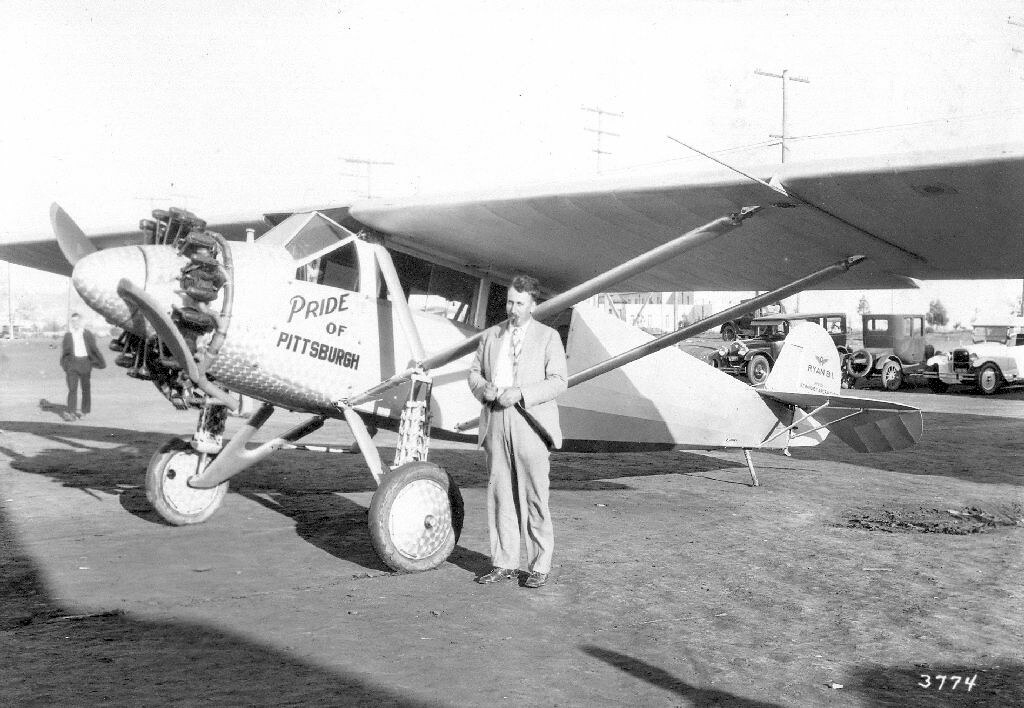At first glance, this photograph appears to show a Lone Eagle from a parallel universe. The airplane in the image resembles the Ryan NYP monoplane that Charles Lindbergh named the Spirit of St. Louis and flew solo from New York to Paris in May 1927. In fact, it is a Ryan B-1 Brougham, a different aircraft altogether, albeit one from the same company.
When Lindbergh, an obscure ex-airmail pilot, was searching for an airplane to use on his transatlantic attempt, he contacted a small firm in San Diego called the Ryan Aeronautical Company. Lindbergh probably knew of Ryan because its M-1 had been used as a mail plane.
On Feb. 3, 1927, Lindbergh sent a telegram to Ryan.
“Can you construct Whirlwind engine plane capable of flying nonstop between New York and Paris,” he wired the company. “If so please state cost and delivery date.”
“Whirlwind” referred to the Wright Whirlwind, a radial, air-cooled engine that Lindbergh had decided on for his powerplant. Ryan replied that it would take them about three months and would cost $6,000. Ryan’s chief engineer, Donald Hall, and his team quickly constructed a high-winged, single-seat monoplane to Lindbergh’s specifications. It took around two months and ended up costing about $10,000.
The San Diego firm wasn’t so obscure after Lindbergh’s flight catapulted the young pilot and his airplane to worldwide fame. In Pennsylvania, businessman C.P. Mayer took notice. His Mayer Aircraft Corporation had been flying airmail out of a small field in Bridgeville near Pittsburgh, and after Lindbergh’s flight, Mayer ordered a pair of Ryan’s B-1 Broughams. He named one after the nearby metropolis.
The man in the photograph is Mayer’s chief pilot, J. Warren Smith. The shot was taken in September 1927, when Smith arrived in San Diego to take possession of the craft.
Although it looked like Lindbergh’s airplane — including the pounded-steel cowling, the tail surfaces, the knock-kneed landing gear and the distinctive cylinders of the Wright Whirlwind J-5C engine — the Ryan B-1 was quite different. For one thing, the Spirit of St. Louis had no windshield (to see ahead, Lindbergh had to sideslip the aircraft and peer out a side window or use a periscope installed in the cockpit) and was famously a single-seat airplane. The Brougham had room for four passengers plus the pilot and had a shorter wingspan.
Still, it was similar enough that when director Billy Wilder set out to film Lindbergh’s memoir in 1955, the production modified three surviving Broughams to stand in for Ryan’s most famous aircraft. Two of those modified airplanes are in museums today, one at the Henry Ford Museum in Dearborn, Michigan, and the other at the Cradle of Aviation Museum on Long Island.
historynet magazines
Our 9 best-selling history titles feature in-depth storytelling and iconic imagery to engage and inform on the people, the wars, and the events that shaped America and the world.






